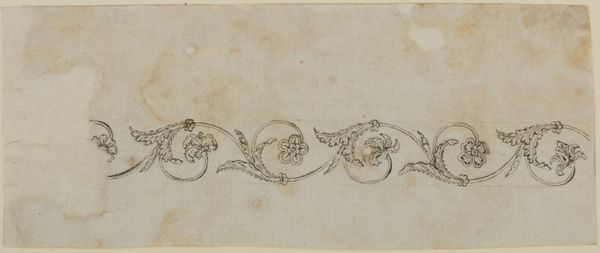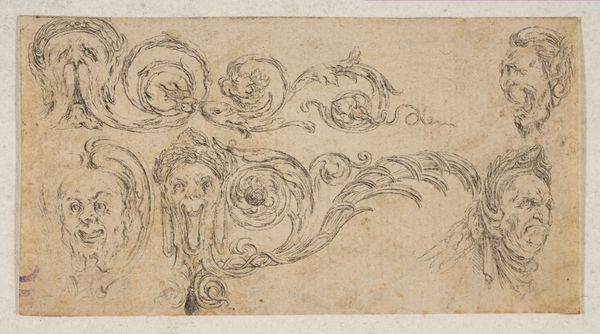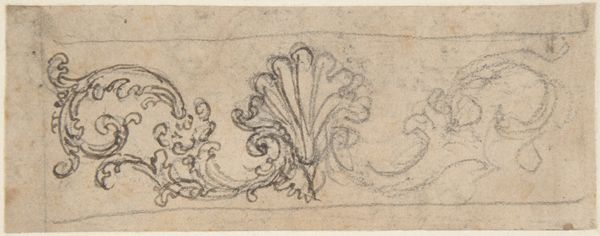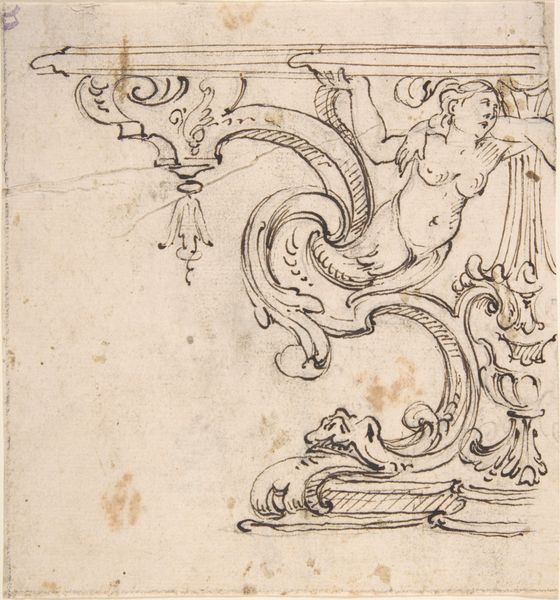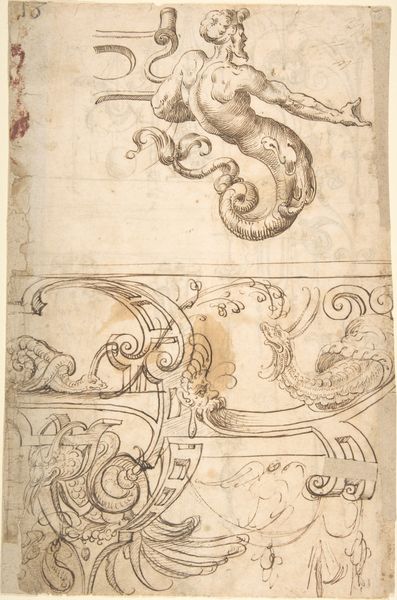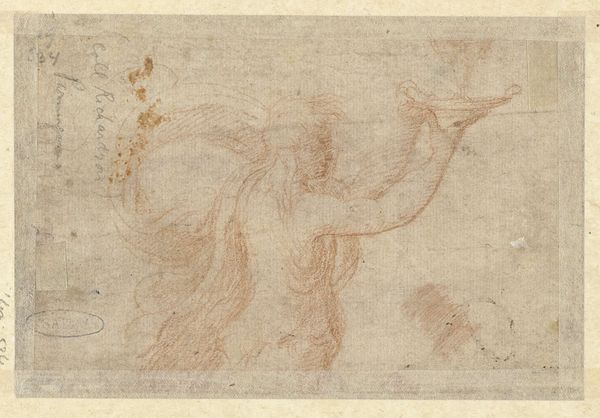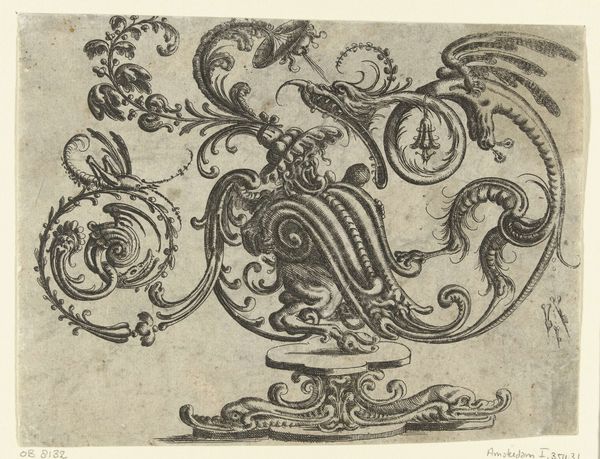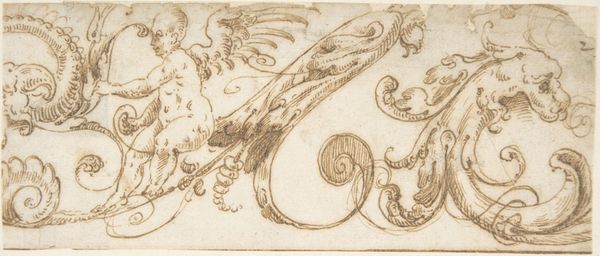
Ornament Drawing from Scrapbook of Working Designs 1755 - 1765
0:00
0:00
drawing, ornament, print, pencil
#
drawing
#
ornament
#
baroque
# print
#
geometric
#
pencil
#
line
Copyright: Public Domain
Curator: I'm struck by the sense of movement captured in such a simple drawing. There's almost a musicality to these lines. Editor: Indeed! The Metropolitan Museum of Art holds this "Ornament Drawing from Scrapbook of Working Designs" by Gideon Saint. Dating from around 1755 to 1765, this piece, rendered in pencil, exemplifies the artistic practice surrounding Baroque ornamentation. It feels both formal and intimate. Curator: The dynamism inherent in Baroque art is definitely here, but what I appreciate most is how these elegant lines conjure familiar foliage; acanthus leaves, maybe, transformed into almost abstract symbols of nature's abundance. Editor: Saint and his contemporaries existed within a burgeoning world of decorative arts, interior design and refined tastes. Consider this a period dominated by royal patronage and increasingly aristocratic demands for exquisite objects; designs such as this served a vital economic function. Think furniture, ceramics, metalwork… Saint’s patterns helped to shape the material culture. Curator: Precisely! It is fascinating to consider the implications of such a sketch for broader culture: the aspiration for embellishment reflected ideals of class, luxury, and power… Editor: What I see are ancient forms being reborn into 18th-century aesthetics, continuing a tradition where visual language remains powerfully symbolic of renewal and endurance. This little drawing carries echoes of empires, goddesses, eternal cycles. Curator: That resonates profoundly. Thinking of it now, this seemingly ephemeral sketch is a blueprint for something grand, influencing countless decorative objects that populated elite households. A fascinating study in visual symbolism shaped by larger social and cultural currents! Editor: Absolutely. It’s easy to overlook the historical weight contained within such delicate strokes of a pencil.
Comments
No comments
Be the first to comment and join the conversation on the ultimate creative platform.
